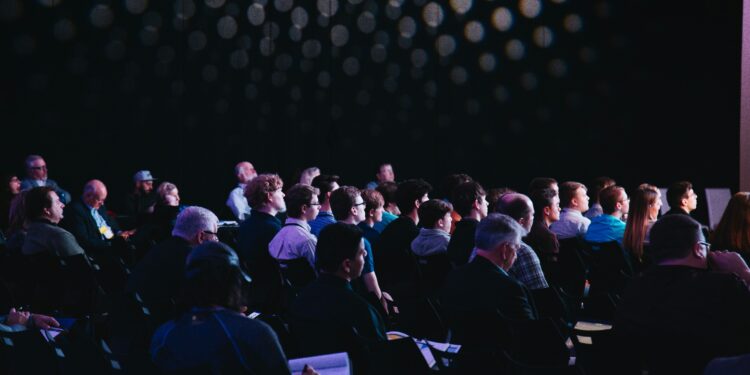The digital buzz surrounding the American Society of Clinical Oncology (ASCO) Annual Meeting reached fever pitch this May, transforming the conference from an exclusive gathering of medical professionals into a viral online phenomenon. Thousands of oncologists, researchers, and healthcare professionals congregated both physically and digitally to exchange groundbreaking insights on artificial intelligence diagnostics, circulating tumor DNA (ctDNA), and next-generation antibodies. Within hours, the hashtag #ASCO2025 soared to the top of X and LinkedIn trending lists, reflecting not merely scientific enthusiasm but a dramatic shift in how medical information disseminates in the digital age.
Yet, as the online fervor peaked, it raised profound questions about the relationship between social media virality and actual clinical significance. Can the volume of tweets, shares, and online discussions accurately represent the true value of medical findings presented at ASCO? Or does social media’s potent amplification risk distorting perceptions, prioritizing flash over substance?
The ASCO Annual Meeting, long recognized as a seminal event in the oncology world, provides a critical platform for presenting the latest clinical data and therapeutic breakthroughs. Traditionally, findings shared here guide future clinical practices, influence policy decisions, and shape patient care strategies globally. The 2025 event was particularly notable for its focus on transformative technologies—AI-powered diagnostics promising faster, more accurate cancer detection; advancements in circulating tumor DNA offering non-invasive cancer monitoring; and innovative antibody therapies potentially revolutionizing cancer treatment.
These scientific advancements alone justify intense professional interest. Yet, the heightened social media activity surrounding ASCO 2025 marked a new dimension of public engagement. Live tweets and real-time updates from sessions created an unprecedented transparency and immediacy, connecting not only clinicians but also patients, advocates, and the broader public directly to cutting-edge research findings.
But while enhanced visibility brings clear benefits, there are significant caveats. Online virality can elevate certain research disproportionately, favoring studies with catchy headlines or instantly recognizable terminology like “AI diagnostics” or “ctDNA breakthroughs,” potentially overshadowing equally significant but less immediately captivating research. Virality inherently privileges the dramatic and easily digestible over nuanced complexity—a dynamic that can skew public and professional perception.
Dr. Sonia Gupta, an oncology researcher at the Dana-Farber Cancer Institute, points out this critical tension. “Social media platforms are remarkable tools for dissemination, but they don’t always align with clinical significance,” she explains. “Groundbreaking research that could meaningfully impact patient outcomes may garner fewer shares simply because it’s harder to distill into tweet-friendly headlines.”
Indeed, historical analyses of viral healthcare trends reveal frequent mismatches between social media popularity and clinical utility. Viral misinformation or oversimplified interpretations of nuanced studies often proliferate unchecked, complicating healthcare providers’ efforts to manage patient expectations and clarify genuine breakthroughs from sensationalized headlines.
However, ASCO 2025 also illustrates positive aspects of social media’s role in healthcare. The virality of clinically meaningful innovations—such as next-generation antibody treatments demonstrating significant remission rates—can rapidly inform broader medical communities and foster collaborative opportunities. Digital engagement also democratizes information, empowering patients and caregivers by providing unprecedented direct access to expert insights.
Still, the inherent unpredictability and volatility of online platforms mean medical professionals must navigate these waters with caution. While a tweet might generate thousands of likes and shares, professional rigor demands deeper scrutiny. Clinical significance must be judged not by online popularity but through meticulous peer review, reproducibility, and demonstrable patient outcomes.
Healthcare institutions and professional societies are increasingly recognizing the importance of managing digital narratives. ASCO itself has begun implementing structured communication guidelines, ensuring accuracy and integrity in social media dissemination. Professional moderation and active engagement with online platforms can help balance sensationalism with substance, ensuring that virality amplifies rather than distorts scientific communication.
The nuanced interplay between social media prominence and clinical significance was particularly evident in discussions about AI diagnostics presented at ASCO 2025. AI-driven innovations promise revolutionary improvements in cancer detection accuracy and speed, generating justified excitement both within the oncology community and online. However, as AI algorithms become more sophisticated and clinical applications grow, researchers caution against premature celebrations driven by online enthusiasm alone.
“AI has transformative potential, but rigorous validation studies remain essential before widespread clinical implementation,” cautioned Dr. Malcolm Reed, an AI specialist at Johns Hopkins University. “Social media excitement is wonderful, but it shouldn’t replace meticulous clinical validation.”
Similarly, excitement surrounding circulating tumor DNA technology—which enables minimally invasive monitoring of cancer progression—demonstrated social media’s dual role. While viral tweets and trending hashtags successfully raised awareness of this groundbreaking method, experts simultaneously urged caution, emphasizing that extensive validation studies remain ongoing. The danger lies not in the enthusiasm itself but in potential misunderstandings or overstatements driven by virality rather than data.
Ultimately, the ASCO 2025 Annual Meeting vividly illustrates a complex reality: social media virality can profoundly influence medical communication and perception, offering substantial opportunities alongside genuine risks. Navigating this new digital terrain requires both strategic engagement and critical vigilance.
For medical professionals, institutions, and patient advocates, leveraging social media effectively demands careful balancing acts—maintaining scientific rigor while capitalizing on digital platforms’ expansive reach. Clear, transparent, and accurate communication remains paramount, mitigating risks of misinformation and ensuring viral engagement supports rather than undermines clinical progress.
In conclusion, the profound digital impact seen at ASCO 2025 is neither inherently beneficial nor harmful. Instead, it reflects a powerful new reality within healthcare communication—one where digital virality and clinical significance intersect in complex, nuanced ways. The oncology community, cognizant of these dynamics, must remain vigilant and proactive, ensuring digital visibility enhances, rather than compromises, the integrity and impact of medical science.















